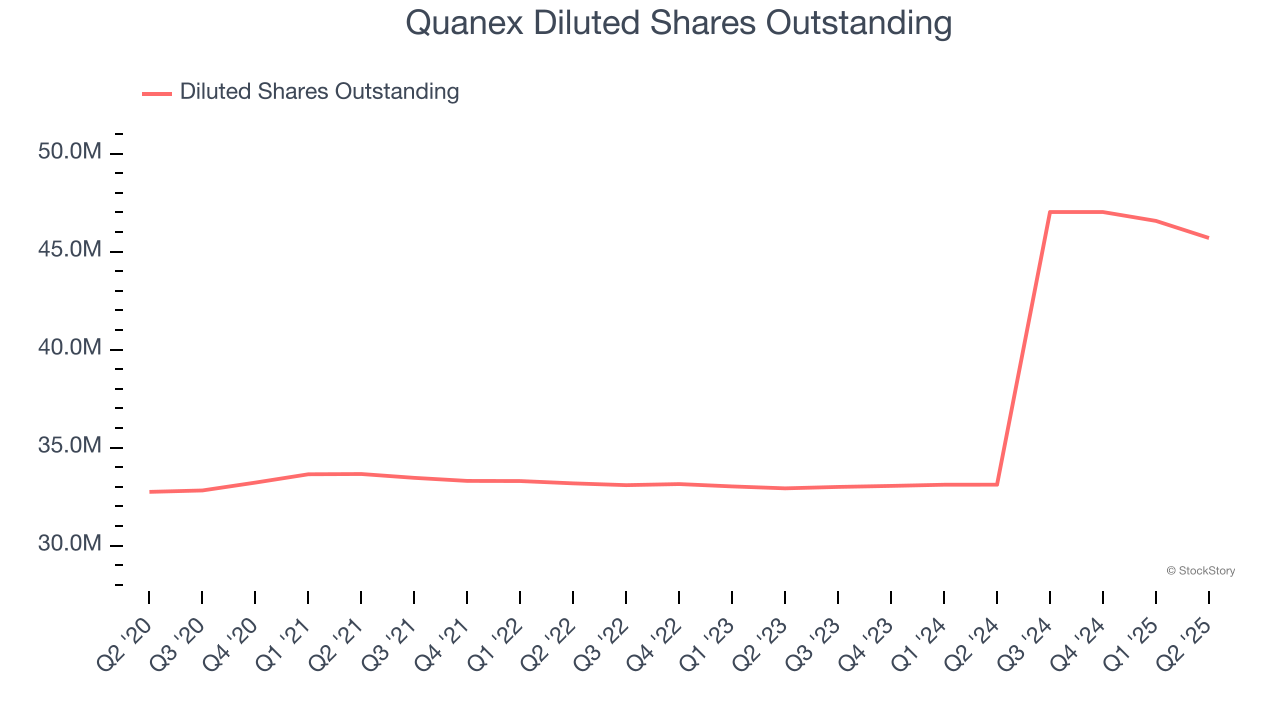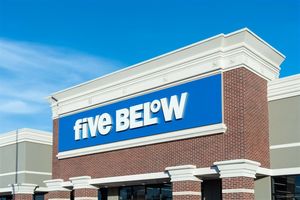
Building products company Quanex (NYSE: NX) beat Wall Street’s revenue expectations in Q2 CY2025, with sales up 76.7% year on year to $495.3 million. On the other hand, the company’s full-year revenue guidance of $1.82 billion at the midpoint came in 1.6% below analysts’ estimates. Its non-GAAP profit of $0.69 per share was 18.1% below analysts’ consensus estimates.
Is now the time to buy Quanex? Find out by accessing our full research report, it’s free.
Quanex (NX) Q2 CY2025 Highlights:
- Revenue: $495.3 million vs analyst estimates of $492.6 million (76.7% year-on-year growth, 0.5% beat)
- Adjusted EPS: $0.69 vs analyst expectations of $0.84 (18.1% miss)
- Adjusted EBITDA: $70.3 million vs analyst estimates of $80.57 million (14.2% margin, 12.7% miss)
- The company dropped its revenue guidance for the full year to $1.82 billion at the midpoint from $1.85 billion, a 1.6% decrease
- EBITDA guidance for the full year is $235 million at the midpoint, below analyst estimates of $270.8 million
- Operating Margin: -54.7%, down from 8.4% in the same quarter last year
- Free Cash Flow Margin: 9.3%, down from 14.3% in the same quarter last year
- Market Capitalization: $918.4 million
Company Overview
Starting in the seamless tube industry, Quanex (NYSE: NX) manufactures building products like window, door, kitchen, and bath cabinet components.
Revenue Growth
Examining a company’s long-term performance can provide clues about its quality. Any business can put up a good quarter or two, but the best consistently grow over the long haul. Thankfully, Quanex’s 17.1% annualized revenue growth over the last five years was incredible. Its growth beat the average industrials company and shows its offerings resonate with customers.

Long-term growth is the most important, but within industrials, a half-decade historical view may miss new industry trends or demand cycles. Quanex’s annualized revenue growth of 26.9% over the last two years is above its five-year trend, suggesting its demand was strong and recently accelerated. 
We can dig further into the company’s revenue dynamics by analyzing its most important segments, Fenestration and Cabinet Components, which are 34.4% and 10.4% of revenue. Over the last two years, Quanex’s Fenestration revenue (window and door components, North America only) averaged 2.9% year-on-year declines while its Cabinet Components revenue (cabinet parts, North America only) averaged 6.6% declines. 
This quarter, Quanex reported magnificent year-on-year revenue growth of 76.7%, and its $495.3 million of revenue beat Wall Street’s estimates by 0.5%.
Looking ahead, sell-side analysts expect revenue to grow 2.5% over the next 12 months, a deceleration versus the last two years. This projection doesn't excite us and suggests its products and services will see some demand headwinds.
Here at StockStory, we certainly understand the potential of thematic investing. Diverse winners from Microsoft (MSFT) to Alphabet (GOOG), Coca-Cola (KO) to Monster Beverage (MNST) could all have been identified as promising growth stories with a megatrend driving the growth. So, in that spirit, we’ve identified a relatively under-the-radar profitable growth stock benefiting from the rise of AI, available to you FREE via this link.
Operating Margin
Operating margin is a key measure of profitability. Think of it as net income - the bottom line - excluding the impact of taxes and interest on debt, which are less connected to business fundamentals.
Quanex was profitable over the last five years but held back by its large cost base. Its average operating margin of 2.4% was weak for an industrials business. This result isn’t too surprising given its low gross margin as a starting point.
Looking at the trend in its profitability, Quanex’s operating margin decreased by 20.7 percentage points over the last five years. This raises questions about the company’s expense base because its revenue growth should have given it leverage on its fixed costs, resulting in better economies of scale and profitability. Quanex’s performance was poor no matter how you look at it - it shows that costs were rising and it couldn’t pass them onto its customers.

In Q2, Quanex generated an operating margin profit margin of negative 54.7%, down 63 percentage points year on year. Conversely, its revenue and gross margin actually rose, so we can assume it was less efficient because its operating expenses like marketing, R&D, and administrative overhead grew faster than its revenue.
Earnings Per Share
Revenue trends explain a company’s historical growth, but the long-term change in earnings per share (EPS) points to the profitability of that growth – for example, a company could inflate its sales through excessive spending on advertising and promotions.
Quanex’s spectacular 16.1% annual EPS growth over the last five years aligns with its revenue performance. This tells us it maintained its per-share profitability as it expanded.

Like with revenue, we analyze EPS over a shorter period to see if we are missing a change in the business.
Quanex’s two-year annual EPS declines of 9.6% were bad and lower than its 26.9% two-year revenue growth.
Diving into the nuances of Quanex’s earnings can give us a better understanding of its performance. Quanex’s operating margin has declined over the last two yearswhile its share count has grown 38.8%. This means the company not only became less efficient with its operating expenses but also diluted its shareholders. 
In Q2, Quanex reported adjusted EPS of $0.69, down from $0.73 in the same quarter last year. This print missed analysts’ estimates, but we care more about long-term adjusted EPS growth than short-term movements. Over the next 12 months, Wall Street expects Quanex’s full-year EPS of $2.09 to grow 32.9%.
Key Takeaways from Quanex’s Q2 Results
We were also happy its revenue narrowly outperformed Wall Street’s estimates. On the other hand, its full-year revenue was lowered. Additionally, full-year EBITDA guidance missed and its EBITDA fell short of Wall Street’s estimates. Overall, this was a softer quarter. The stock traded down 14% to $17.95 immediately following the results.
Quanex didn’t show it’s best hand this quarter, but does that create an opportunity to buy the stock right now? We think that the latest quarter is only one piece of the longer-term business quality puzzle. Quality, when combined with valuation, can help determine if the stock is a buy. We cover that in our actionable full research report which you can read here, it’s free.





